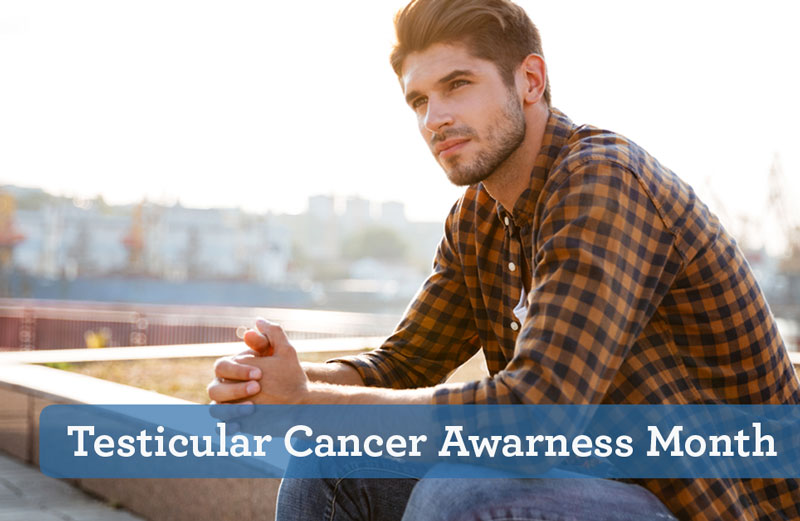Since April is Testicular Cancer Awareness Month, this is the perfect time to learn more about this type of cancer and the risk factors, early detection, and treatment options available.
What is testicular cancer and how common is it?
Testicular cancer is a disease in which the cells within one or both testicles grow abnormally and become cancerous. There are different types of testicular cancer, which is dependent upon the type of cell involved. All of them are serious.
When testicular cancer occurs, it usually affects young and middle-aged men, with the average age at the time of diagnosis being around 33 years old. However, about six percent of the cases that occur are in children and teens—and about eight percent are in men older than 55.
Usually, testicular cancer can be treated successfully, so the lifetime risk of dying from this cancer is very low: about 1 in 5,000 men. However, testicular cancer can also spread to other parts of the body and form new tumors. This is referred to as metastasis. If testicular cancer spreads, this most commonly occurs to the abdomen, liver, lungs, bones and brain. Depending upon the type of testicular cancer involved, it may spread quickly and can be deadly if left untreated.
What are the risk factors for getting testicular cancer?
According to the American Cancer Society, there are few risk factors that make it more likely that someone will get testicular cancer. In fact, of the boys and men who develop it, most don’t have any of the known risk factors, which include:
- An undescended testicle
- Family history of testicular cancer
- HIV infection
- Carcinoma in situ of the testicle
- Having had testicular cancer before
- Being of a certain race/ethnicity
- Body size
What are the signs and symptoms of testicular cancer?
Usually, a lump on the testicle is the first symptom, or the testicle might be swollen. Other symptoms may be breast growth or soreness, and early puberty in boys. If cancer is advanced, symptoms may include low back pain; shortness of breath, chest pain, or a cough; stomach pain; and headaches or confusion.
While most doctors agree that a testicular exam should be a part of the general physical exam, others also recommend that all men perform a self-exam of their testicles monthly after puberty. This may be especially important for those who have any of the risk factors mentioned.
How is testicular cancer diagnosed and treated?
Determining a diagnosis of testicular cancer begins with a physical exam by a physician. If a lump or other sign of testicular cancer is discovered, additional testing will be conducted. Such testing may include:
- Ultrasound of the testicles
- Blood tests for tumor markers
- Surgery to remove and test the tumor
If cancer is found, additional testing will be conducted to find out whether the cancer has spread to other parts of the body and to help guide the treatment plan.
Treatment for testicular cancer may include some combination of surgery, radiation, and chemotherapy. The approach to treatment is primarily based on the type and stage of the cancer.
If you have questions about testicular cancer, our team is here to answer your questions and provide the appropriate treatment. You can use our CONTACT FORM or call us at (616) 392-1816 to request an appointment with one of our doctors.


